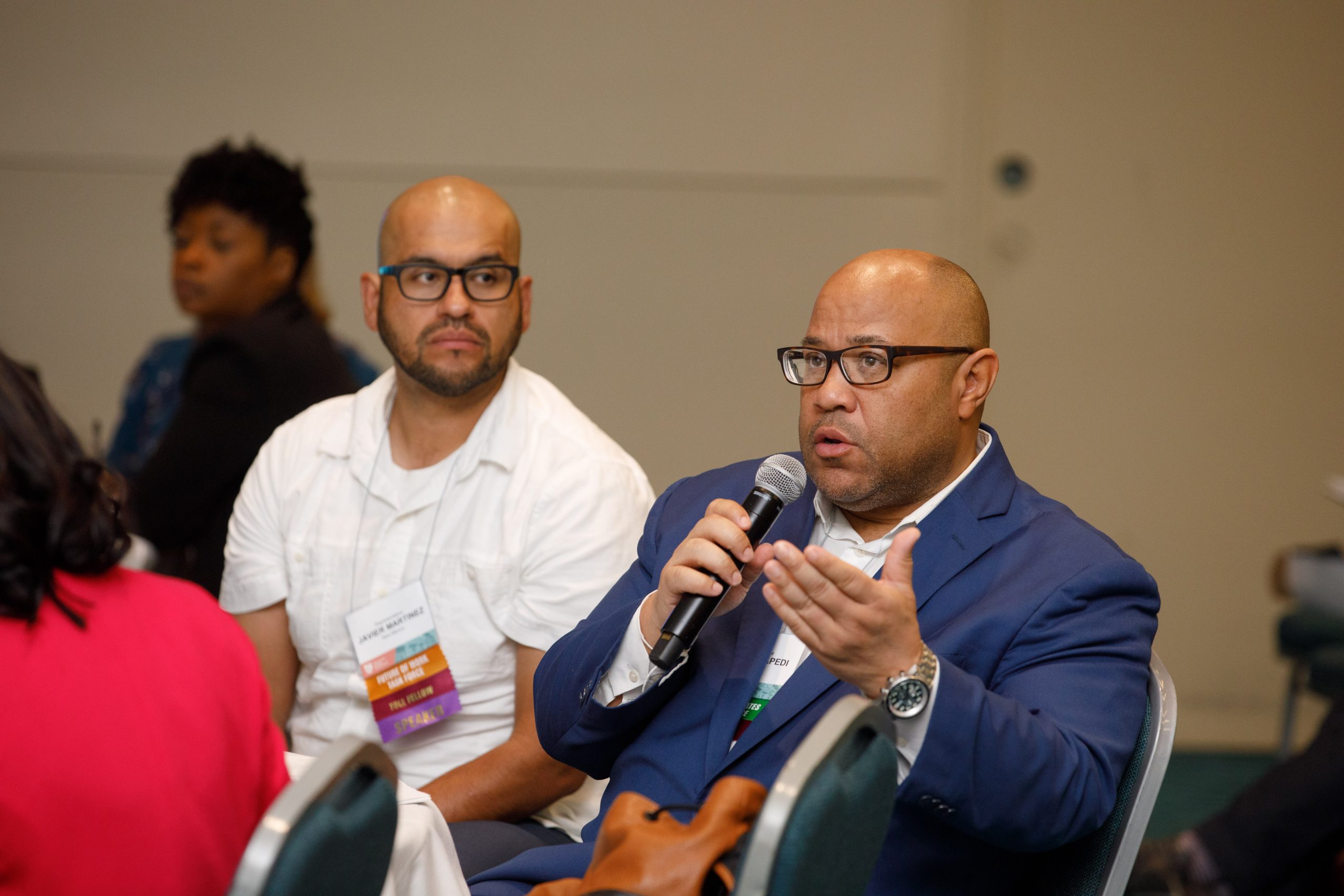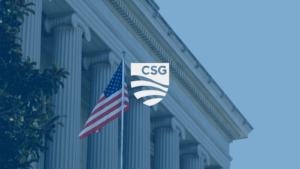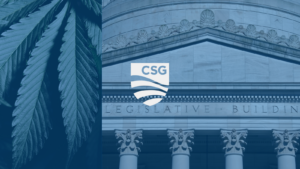
CSG released the reports of its Healthy States National Task Force and its Future of Work National Task Force as well as shorter summaries that include a checklist of suggested state strategies and opportunities for approaching these shared public policy issues. Learn more about the work of this member-driven group and how your state can benefit from these nonpartisan findings.
View the CSG Future of Work National Task Force Report Here
View the CSG Healthy States National Task Force Report Here
Members worked together to collaborate on pressing public policy topics impacting every state. These reports detail more than 80 strategic recommendations to improve public policy.
In early 2019, The Council of State Governments launched two national task forces focused on the future of the workforce and healthy states, each with 50 members from around the country. The CSG Healthy States National Task Force and the CSG Future of Work National Task Force were bipartisan and made up of state government officials from executive and legislative branches as well as a handful of non-voting advisors from the private sector.
Each task force was divided into four subcommittees, and the two-year goal was to convene four times in order to hear from experts, engage in robust discussions, share experiences and develop consensus around the areas of focus for each subcommittee. CSG policy analysts worked alongside each subcommittee to assist with research and fact-finding and to facilitate communication and information sharing in the interim between formal in-person meetings. The goal was that at the end of the two-year period, each task force would develop a framework offering recommendations and innovative solutions paired with state examples and opportunities for addressing pressing policy concerns.
When these task forces first convened in 2019, no one could have anticipated the onset of a global pandemic. However, topics including telehealth, access to broadband and the possibility of a worldwide health crisis were already being discussed. The COVID-19 pandemic added value and importance to the work of both national task forces.
One of the realizations that surfaced as these groups convened and conversed during the pandemic is just how interconnected and integral both of the task forces are, as states worked diligently to implement technological solutions to navigate health-related issues while simultaneously working to solve the myriad of impacts resulting from COVID-19 on the workforce, on education, on businesses and on communities and families across the country. The importance of cross-sector work and the value of partnerships in solving our nation’s greatest challenges is now more apparent than ever.
CSG is releasing the reports of its Healthy States National Task Force and its Future of Work National Task Force, as well as shorter summaries that include a checklist of suggested state strategies and opportunities. While the state examples and intricate narrative around each recommendation are outlined in each report, the checklist offers a visually scannable list of directives, potential investments and legislative opportunities, as well as partnership ideas that can guide states in addressing some of the themes outlined in the report. These are available on their respective websites at web.csg.org/healthystates and web.csg.org/futureofwork.
Healthy States
The CSG Healthy States National Task Force began its work in January 2019 with the goal of establishing a national structure for state officials to build the best possible framework for health care in their states. Coming together in an inclusive, nonpartisan space, the state officials on this task force were selected for their knowledge and work in health care and workforce related issues.
America spends more money on health care than any other industrialized nation. But when it comes to outcomes, the U.S. isn’t at the top of the heap. This task force knew there was work to be done, and it set out to help states reduce costs and improve outcomes to help communities across the country exist in a more healthy state.
When the task force began its work, it could not have predicted the arrival of the COVID-19 virus. However, the task force did anticipate that states should begin to prepare themselves in the areas of health innovation, technology, affordability, capacity, preparedness and access to ensure that state health systems were prepared to meet any challenge. With the arrival of 2020, these topics already being explored by the task force members were no longer areas that required future planning; they had become vital, critical and immediate. The ultimate impacts of the COVID-19 virus on state health systems likely will not be fully known for some time. We do know one thing for sure: state leaders will be able to use lessons learned through innovation and from one another to guide the recovery process and maximize preparedness for future events. web.csg.org/healthystates
Future of Work
The Council of State Governments Future of Work National Task Force set out in June 2019 to analyze workforce issues and determine how to grow state economies. Important topics like education, state governance and the delivery of state services, emerging technology, the evolving economy and equal opportunity and diversity were outlined as important pressing issues that should be addressed.
CSG originally convened this task force of state officials and private sector partners to analyze workforce issues and explore how to grow economies and succeed globally. However, when a global health crisis swept across the world in 2020, the focus and priorities of this national task force were quickly realigned to meet the needs of quickly changing landscapes in state education, workforce and technology. While the long-term impacts of this pandemic and its resulting changes are still unknown, state leaders — including those serving on this national task force — are working to anticipate what the coming years might hold for the future of the country’s workforce.
In the past year, states have dealt with the impacts of closed schools and the challenges presented by moving to online learning in the wake of rising cases of COVID-19, but policy conversations will return to how education serves the future of work. State leaders are recognizing the value of putting people first in an economy that will become more tech-centered and internet-based. Virtual court sessions and livestreamed government meetings during the COVID-19 pandemic have shown how smart governments are able to maintain continuity and enhance government services. Additionally, the future workforce will almost certainly include high levels of automation, and opportunities still exist for stakeholders to shape how automation will be introduced to the workplace.
New in 2021
In 2021, CSG will launch its next two-year Healthy States National Task Force, an initiative that will assist states with a variety of health and well-being issues, all of which have been exacerbated by the pandemic. This will include expanding on some of the themes from the previous task forces. The new Healthy States National Task Force will be composed of subcommittees focused on Fiscal Health, Human Health, Economic and Workforce Health and Civic Health. Its first formal meeting will occur virtually in June 2021.





